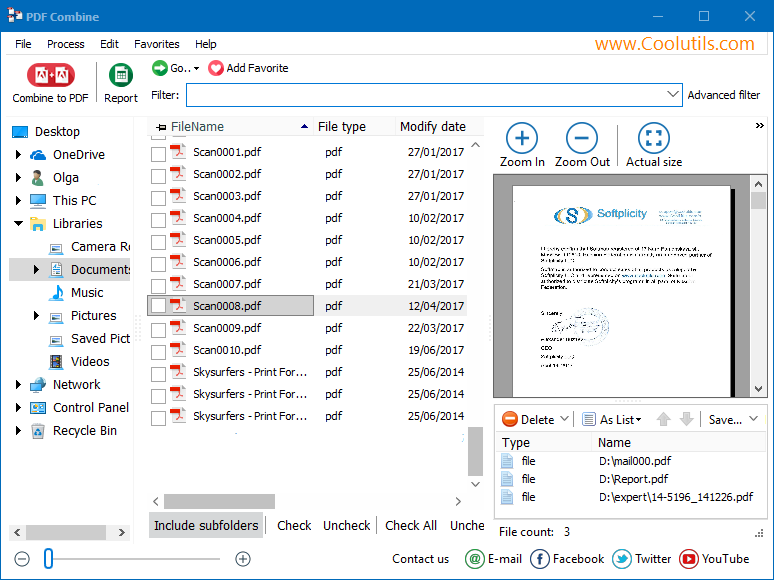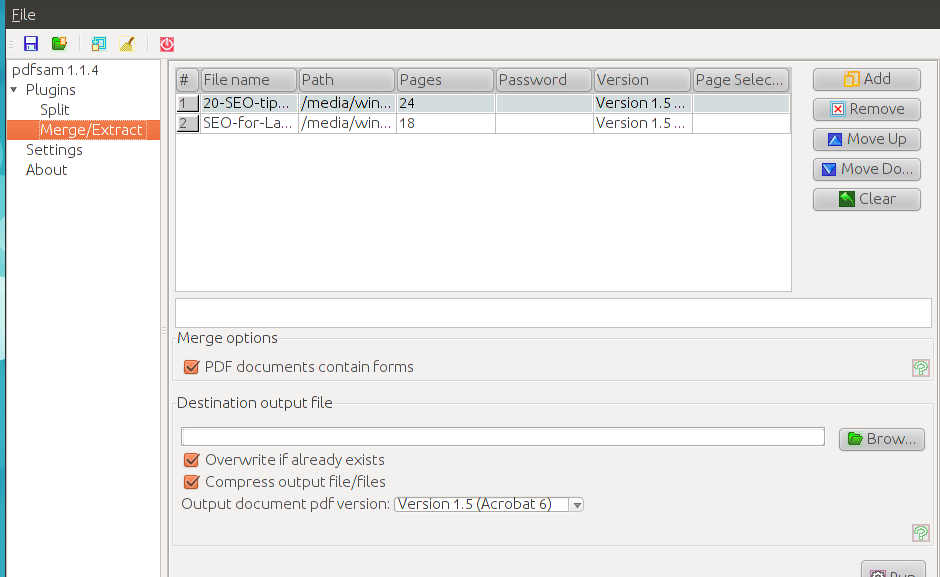

This is a very handy tool and you can even edit PDF files with it. Method 1: Use LibreOffice to combine multiple images into PDF I’ll show all the above three methods in this tutorial. The versatile ImageMagic command line tool can be used for converting images into PDF.gscan2pdf graphical tool can also be used combining multiple images (and single page PDFs) into a single PDF one.LibreOffice Draw or even Writer can be used to combine multiple images into PDF.In Linux, there are several ways you can combine multiple images into a single PDF file. It’s just one of the examples where you may need to convert multiple image files in one PDF file. My problem was that I had documents scanned individually but not in one file. I had this need when I had to apply for a job and they required me to upload a single PDF file consisting of several documents. And in any case, I don’t want to upload my documents to some random web server.

LINUX MERGE PDF FILES INTO ONE FREE
But they are either not free or they will put their watermark on the final PDF file. You may find several websites that allow you to do that. Maybe instead of using cat on the pdf file, use something like hexdump, od, or uuencode/ uudecode to dump the binary file to ascii, then on the mainframe, rebuild the binary file.You have several documents or images scanned individually and you need to save multiple images to one PDF file.

If you don't have tar on this mainframe, you'll have to think of something else. Is it "are", "a", "dyes"? Or "a", "read", "yes"? You can add spaces, or some other character for delimiting your strings but what if the string you've started with has one of those characters? Without any prior knowledge to what you started with, you can't separate them into 3 strings again. You concatenate them and you get "areadyes". For example, you have 3 strings: "are", "a", "dyes". If you want to be able to separate the files later, follow infgeoax's advice and use tar.Ĭat doesn't do things that allow you to separate what you've concatenated together once you've done it. The binary pdf is going to be corrupted because you've concatenated it to the end of an ascii file. If you want to combine many files together and then be able to separate them afterwards, you don't use cat because that's not what it's for.

If you want to concatenate them, then yes, you use cat. Is CAT the correct way to combine multiple files of different type into single file ? 2) Also, the pdf is shown as damaged file in mainframe. Then use this cat command: cat plainFile.abc blank_line pdfFile.pdf > combined.fileġ) The pdf is not starting from a new line. Or, a slightly less messy way, you can create a file with just a blank line using echo: echo > blank_line You can insert a newline by either piping a blank echo: cat plainFile.abc > combined.file If this is what you want, cat is probably the command you want. I want the new file to start at the beginning of a new line. However, right now if the first file is ending at position 3 then second file is getting appended right after that i.e. Second file should start from position one The idea is to send the destination file over to mainframes where it will be parsed. I want the second file to start from a new position in a new line. In way two, both files get combined, however the second file is getting appended in the position where first file ends. In way one, the second file is not getting appended to the destination file even though the definition says 'The operator > can be used to combine multiple files into one.' Notice the difference in '>' and '>' in above ways. I am using cat command to achieve the same: Way 1: The name of the destination file would be combined.file I want to join the two files into a single file. Name of first file is plainFile.abc and name of second file is pdfFile.pdf I have two types of files - a simple character file and a pdf file.


 0 kommentar(er)
0 kommentar(er)
